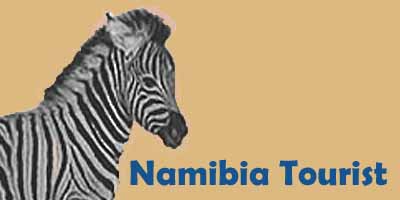Windhoek is the capital of Namibia and is by far most populous city in the country with over 325,000 people, according to the 2011 census. The next largest city and town, each with about 1/5 the number of inhabitants, are Walvis Bay, a coastal city, and Rundu, a town in northeastern Namibia. Namibia has about 2.3 million people and is a semi-presidential republic. It gained independence from South Africa in 1990.
Although most tourists visit Namibia to enjoy nature treks and wildlife viewing, spending a day or two in Windhoek is a good way to start a Namibian vacation, especially for those coming from afar who need to overcome jet lag before starting their adventures in the wilderness.
Monitoring agencies have said that the country has free and fair elections; however, other aspects of democracy are less well developed. Transparency International has ranked Namibia in several aspects of democratic rule:
- Corruption Perceptions index: 49. Scale 0 to 100. Higher numbers = less corrupt. By comparison, Germany’s score is 79.
- Control of Corruption index: 0.26. Scale -2.5 to +2.5. Higher numbers = less corrupt dealing. By comparison, Germany’s score is 1.7.
- Judicial Independence index: 4.9. Scale 1 to 7. Higher numbers = less influenced by powerful people. By comparison, Germany’s score is 6.3.
- Voice & Accountability index: 0.33. Scale -2.5 to +2.5. Higher numbers = more government accountability. By comparison, Germany’s score is 1.35.
- Rule of Law index: 0.23. Scale -2.5 to +2.5. Higher numbers = greater confidence in enforcement of laws. By comparison, Germany’s score is 1.63.
Some of Namibia’s Ministers of government agencies have been criticised for corrupt dealings but remain in power. Bernard Esau, Minister of Fisheries and Marine Resources, is one such government agent. See the following for more information:
Namibia: Esau Should Embrace Transparency, Not Hypocrisy
Esau embroiled in nearly N$300m fishing quotas scandal
Esau and President Geingob were also criticised for taking expensive gifts from businessmen:
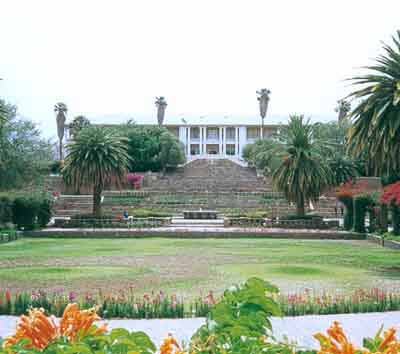
Tintenpalast
Tintenpalast, house of parliament, Windhoek, was designed by German architect Gottlieb Redecker. It was built from 1912 to 1913. In front of the building is Parliament Garden. Photo: Georgio
Tintenpalast
See Tintenpalast and Parliament Gardens in front.
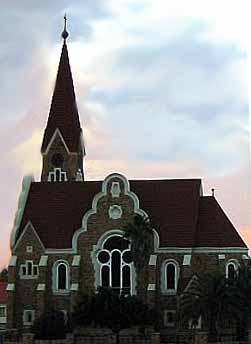
Christ Church
Christ Church, in Windhoek, was built as a Gothic revival Lutheran church in 1910.
Christ Church
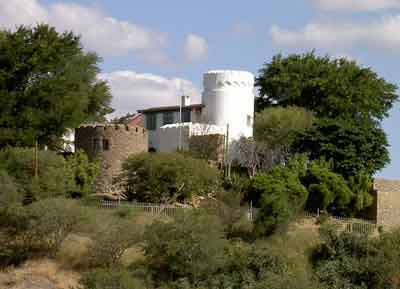
Schwerinsburg Castle
Schwerinsburg is one of three castles in Windhoek, Namibia. It’s tower was built in 1890, but it was modified over the years as it changed hands. It is currently the home of the Italian ambassador to Namibia. Across the street is the National Botanical Garden, which is more of a natural park than a planned garden. Photo: Sigismund von Dobschultz
Schwerinsburg castle
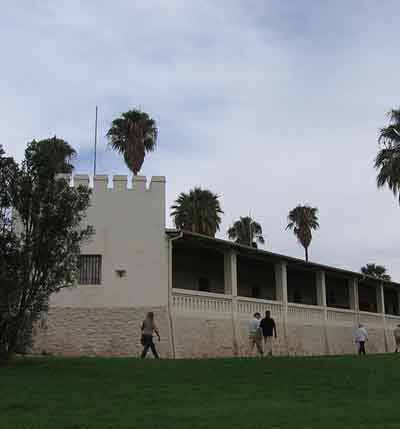
Alte Feste
Alte Feste is a fortress in Windhoek that was built between 1890 and 1915. It now houses the National Museum of Namibia. Photo: Alexander Johmann
Alte Feste
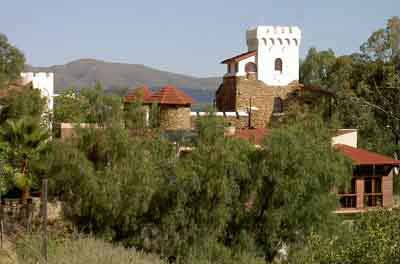
Heinitzburg Castle
Heinitzburg (Heynitzburg), one of the three castles in Windhoek, Namibia, was built in 1914 by architect Wilhelm Sander. Today it is a hotel. Photo: Sigismund von Dobschultz
Heinitzburg Castle
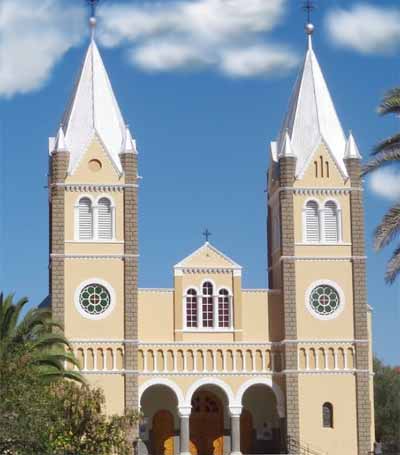
St. Mary's Cathedral
St. Mary’s Cathedral in Windhoek is the seat of the Archdiocese of Windhoek and was constructed between 1906 and 1908. Additions and renovations have been made in the decades since.
St. Mary's Cathedral
Share your photos of Namibian city sites
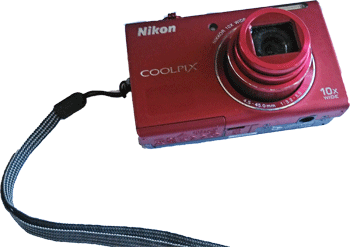
|
Upload files
|
|
|
|
|
|
|
